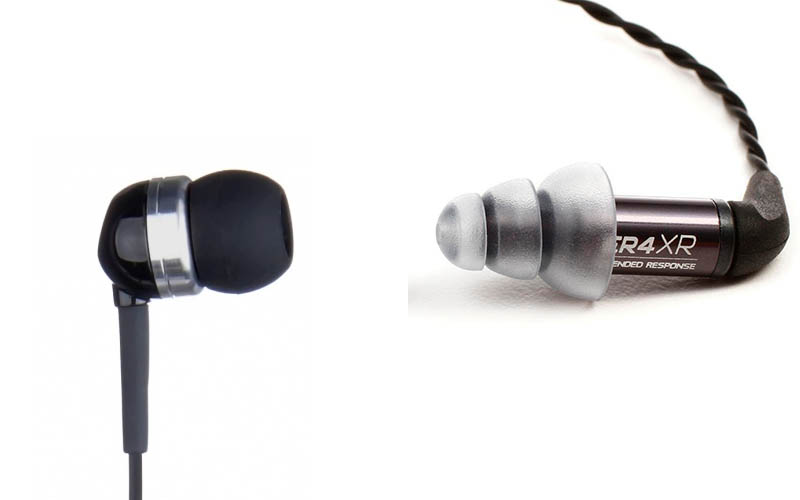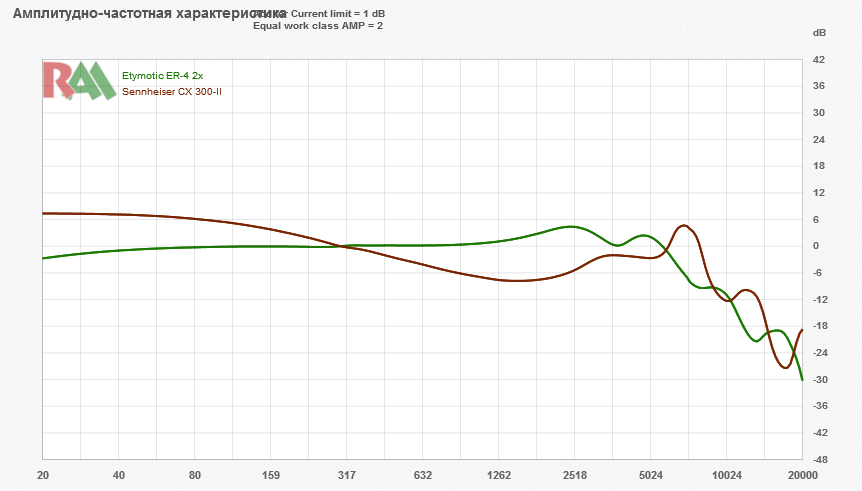What is the difference in sound between rebar and dynamic bass?

Recently I came across debriefing about which bass is correct - rebar or dynamic. Possession of different headphones and technical tests conducted on the order of 250 in-channel headphones (dynamic, rebar and hybrid) allowed us to form an opinion. However, who needs someone’s opinion today, regardless of credibility?
To clarify the difference in sound of the bass, I chose the main objective reasons for the differences and made the appropriate processing of a pair of music tracks. After listening to the demo tracks, you can decide for yourself whether the various assumptions are fair and better understand what the difference is buried. And is there anyway?
First of all, I want to indicate my position. The topic of comparison itself did not appear in peak and not in support of someone, but the stars just came together.
At one of the forums there was a discussion that one authority considers this and that, and another authority quite differently, and who did “re-authorize” whom in their reviews and video messages?
At that moment I thought there seems to be a number of logical explanations, but how to convey them so that it doesn’t seem like “I have almost 250 tested headphones ( go to the link and make sure ), the collection of various headphones will have a couple of dozen that cost from $ 1 to $ 1,000, and generally I’ve been listening to this whole thing for a long time, I know a lot, trust me unconditionally. ” Have you already believed and are waiting for a short answer?
If so, then you can not read further. Material for only those who will draw conclusions himself. And even more so for those who already have a definite opinion, based on their own use of different headphones.
There are many reasons for the different sound between reinforcement and dynamic headphones. We analyze the main. What we do not understand, it will be possible to discuss in the comments and estimate whether it can be translated into additional demo tracks.
All demo tracks with the ability to play from the browser are available on a separate page . In my opinion, it is easier to download and play everything from a separate player, because starting the next track does not stop the previous one. In different browsers, the interface and features of the audio tag are individual.
How does the main difference between “reinforcement” and “dynamics” usually appear?
Almost all the wording looks like “the bass is fast and accurate at the armature, and at the speaker it is slow and sluggish”.
Well, go ahead and listen ... and vote on how you get the impression after listening.
As a source for the demo tracks I took a couple of my own drafts many years ago, which are quite suitable for bass evaluation, for quantity and legibility. Some specific audiophile tracks are not used to avoid copyright problems.
Originals without processing
test track No. 1
test track No. 2
Headphone frequency response
In most cases, reinforcement headphones have a flat frequency response from the lowest frequencies to the beginning of the high frequencies. Dynamic headphones, on the contrary, have a rise in the low-frequency region with a dip in the lower-high region.

If desired, you can compare the frequency response and other headphones in addition to these in the example .
In order to listen to it in any headphones, the demo tracks are processed in the form of contrast - in order to feel how the sound changes in one direction or another.

Toward the “Armature”:
Track # 1
Track # 2
Towards the “Dynamics”:
Track # 1
Track # 2
Which processing gave speed and accuracy, and which lateness and lethargy?
SpoilerНа мой взгляд, именно это закладывает основное различие, которое будет справедливо для 90% случаев (так, никакого давления авторитетом).
Long attenuation from the speaker
There is an opinion that the reinforcement emitter does not give long lasting sounds, but the dynamic one cannot be immediately silenced and gives long decays.
This theory, in my opinion, is based on a direct analogy with large phase-inverter-type speakers, where the bass port adds bass, but with a slight delay. And since the phase inverter works as a resonator in the low-frequency region, a long attenuation not only feels like a delay, but also reduces the intelligibility of the bass as a whole. In the “right” systems, the “closed box” design is usually used to get a “fast bass”.
In this logical chain, I don’t really see where in the headphones there is a phase inverter that would give such a resonance. Probably the closest in essence is the design only in the Shure SE 846 and JVC HA-FXZ200, which are more likely to give just a delay in the dedicated long sound guide, rather than attenuation.


But maybe we have more reflections of the hull and other probably not obvious things that can give such an effect.
If we compare directly the reinforcement emitter and the speaker, then the reinforcement is in its essence, a speaker that has already been placed in a housing with a small sound guide at the output.
For this, a small volume echo was applied to the range up to 120 Hz. The magnitude of the attenuation is quite large for the possibility to hear it both in headphones for $ 1, and through a simple smartphone.
track number 1
track number 2
Direct bass delay
When using separation filters, a phase shift occurs and the low-frequency section begins to play with a slight delay without additional echo. To compensate for this, some speakers make the front panel tilt so that the tweeter is farther from the listener a certain distance. Where the dimensions of the speakers are large, they make shifts separately mid-frequency and high-frequency sections into the depths. Such speakers are called phase linear.

They are considered cool, but not all hear this coolness, considering that our ear does not fix such things. In most studio monitors there is no such compensation.
This can be found in the in-ear headphones, recently Astell & Kern Billie Jean were on the tests.

These headphones use sound guides of different lengths.
Here, just in time, the frequency ranges separated by 120 Hz were separated. The delay is quite large, 10 ms.
Technically, such a delay is most likely in multi-driver headphones using high-order filters. But, usually in headphones only the first order is used because of the impossibility of using large-sized inductors.
track number 1
track number 2
Try to feel the difference between the time shift and attenuation from the last example.
Overdrive
What is the problem of many small bass-reflex speakers? The small case does not allow to make a long phase inverter. And the shorter the pipe, the smaller the diameter should be in order to save the selected frequency to resonance.
This leads to the fact that when the volume is increased, the air cannot “pump” through the pipe and an analogue of soft clipping occurs. This is accompanied by either vocal or enrichment of additional harmonics. Those. if the main bass range was in the range of 40-80 Hz, then with an overloaded phase inverter we will get additional harmonics in the range of 80-320 Hz.
By the way, some users sometimes confidently hear the “lowest frequencies” during various “sound quality” tests in small speakers precisely for spurious additional harmonics in the mid-frequency range, taking it for the ability of speakers to play from 15 Hz.
Such a detailed explanation with the analogy of the phase inverter is not surprising. The fact is that it is in the vast majority of rebar speakers that the sound output is organized through a narrow neck! And it is they who are potentially ready to give sounds, which will not give dynamic emitters.

I met headphones without a narrow neck only Sony. Not sure that this was dictated by logic in the direction of improving the quality of sound. Most likely this is due to the fact that the radiators are made by herself (or completely by herself) into the already prepared headphone case, where there is no need to fix the tubes to the sound guides.
Formally, this test will show and how the headphones will sound, in which the radiator goes into overload.
Here the low-frequency range was compressed by the compressor.
track number 1
track number 2
Listen? Share your impressions!
Only registered users can participate in the survey. Sign in , please.
